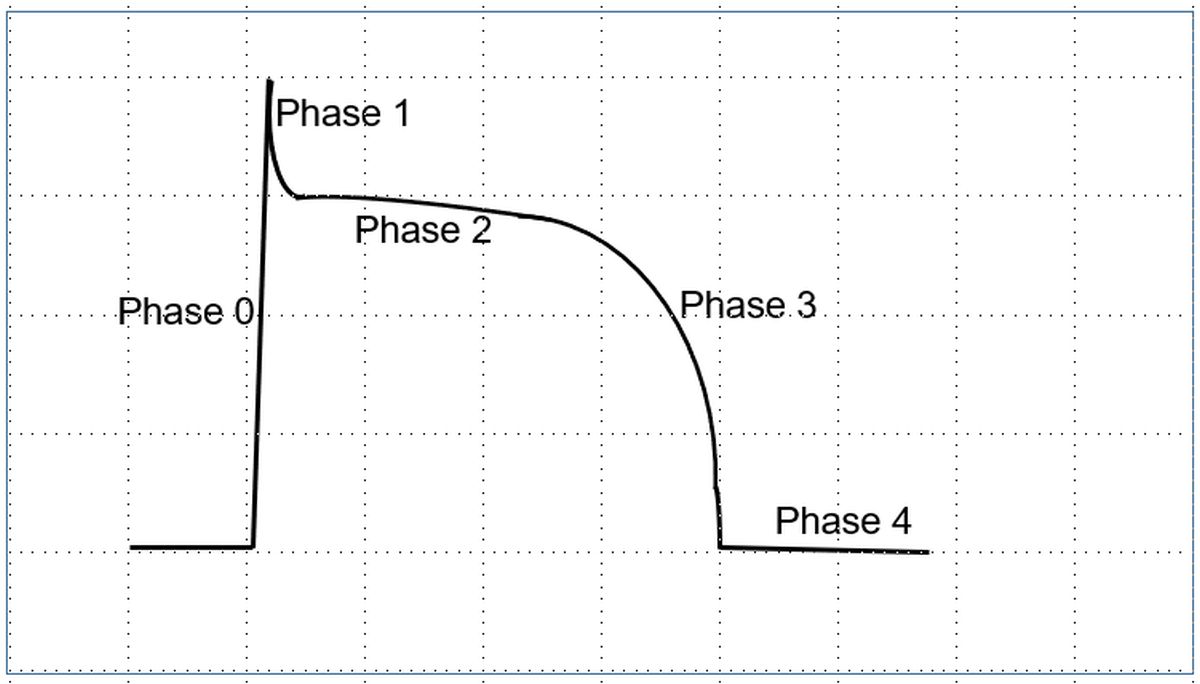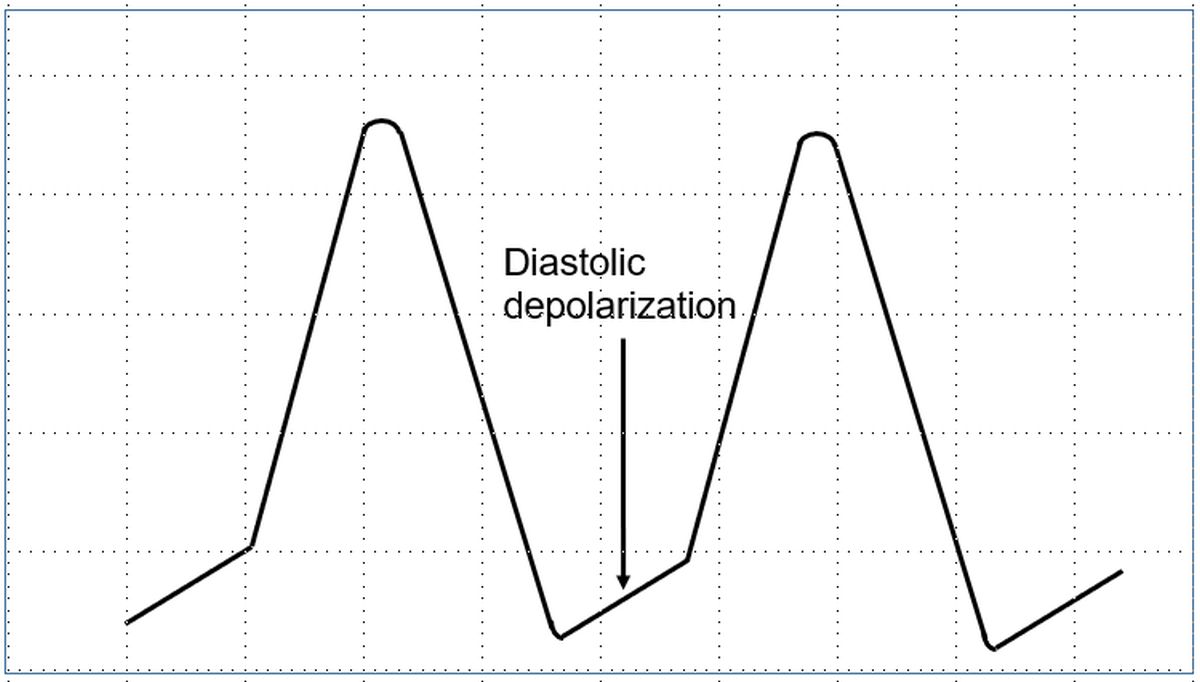Cardiac action potential
Cardiac action potential
Typically described cardiac action potential is that of the myocardial cell. Action potential of tissues like sinus node will be different and characterized by diastolic depolarization which contributes to the automaticity.
Action potential of the myocardial cell
It may be noted that the cardiac action potential is different from the surface electrocardiogram which represent the sum total of all electrical activity of the heart as recorded from the body surface. Myocardial action potential is recorded with intracellular electrode under experimental conditions. The action potential has a total of 5 phases.
Phase 0 (Rapid depolarization): Phase 0 is the initial phase of rapid depolarization in which the intracellular voltage rises from about -90mV to about +20 mV. The peak rate of rise is called Vmax. It is due to the rapid influx of sodium ions through the open sodium channels (INa).
Phase 1 (Notch): Phase 1 is the rapid initial fall in intracellular voltage due to open potassium channels (Ito – transient outward current).
Phase 2 (Plateau): Phase 2 is a plateau phase in which influx of calcium ions through L-type calcium channels (ICa-L) is balanced by efflux of potassium ions by slow delayed rectifier current (IKS).
Phase 3 (Repolarization): In phase 3, calcium channels close while potassium channels remain open till the intracellular voltage reaches the baseline value of -90mV. The potassium channels active in this phase are IKS, IKR (rapid delayed rectifier current) and IK1 (inward rectifier current).
Phase 4 (Diastole): Phase 4 is the resting membrane potential which is maintained stable at -90mV by the potassium currents (IK1). Sodium and calcium channels are closed during phase 4.

Action potential of pacemaker cells
Action potential of the pacemaker cell is different from that of ventricular myocardial cell. It is characterized by lower slope of phase 0 (lower Vmax) and the presence of diastolic depolarization mediated by the funny current (If), also known as pacemaker current. Funny current is through the hyperpolarization-activated cyclic nucleotide-gated (HCN) channels and is a mixture of sodium and potassium currents. With sympathetic stimulation, funny current and the slope of diastolic depolarization increases and heart rate increases. The slope of diastolic depolarization decreases with parasympathetic stimulation.
The depolarization phase is mainly due to L-type calcium channels (ICa-L). During repolarization, potassium channels open and calcium channels close. There is some contribution to the diastolic depolarization phase by T type calcium channels (ICa-T).
